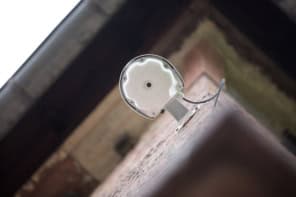Physicists in the US and Germany have proposed a new type of material that could get around the absorption problems that have prevented the creation of practical “superlenses” for visible light. The material -- which has not yet been made -- uses “electromagnetically induced chirality” to be transparent to light while having a low enough density to be made practically (Phys. Rev. Lett. 99 073602).
Superlenses — lenses that in theory can have unlimited resolution — avoid the diffraction-related limits on the resolution of normal lenses by capturing the special “evanescent” waves that exist close to a sample’s surface. To do this they must be made of a material with a negative refractive index, but so far physicists have struggled to find such a material that works for visible light but doesn’t absorb too much light.
Ronald Walsworth from Harvard University and colleagues from University of Connecticut and the Technische Universität Kaiserslautern say that absorption can be almost eliminated using a new technique called electromagnetically-induced chirality (EIC) — a variation on an established technique called electromagnetically induced transparency (EIT).
In EIT, the transmission of a “probe” laser pulse through a medium is controlled by a second “pump” laser pulse. With the pump pulse off, the probe momentarily excites atoms to a higher energy state before they fall down again and re-emit the light in random directions. But turn the pump pulse on and the atoms are pre-excited to a different energy state, leaving the probe pulse to pass through that atoms as if they were transparent.
To achieve EIC, Walsworth and colleagues propose a more complicated arrangement of energy levels that would not only make a medium transparent, and hence non-absorbent, but would also make the electric and magnetic light fields interact. Such “chirality” would make a negative refractive index practically achievable by reducing the density of material required.
The other advantage of the proposal is that, by changing the intensity of the pulses, the strength of the negative refraction can be precisely tuned. According to Walsworth, this would be important for making lenses that do not distort images.
Walsworth told physicsworld.com that experimental versions of his idea are being pursued by colleagues of his at Harvard.



